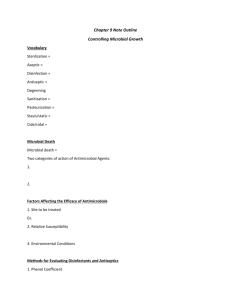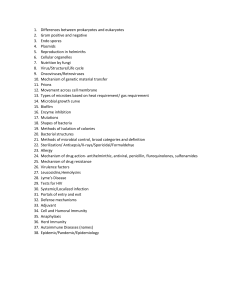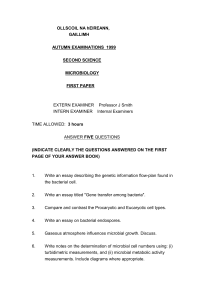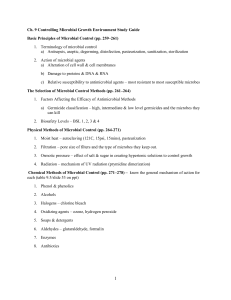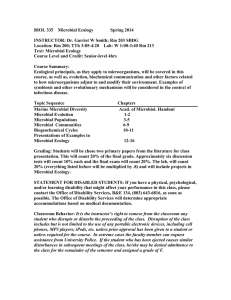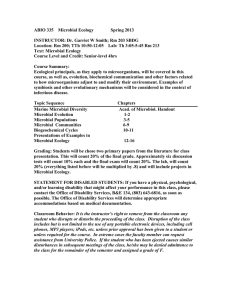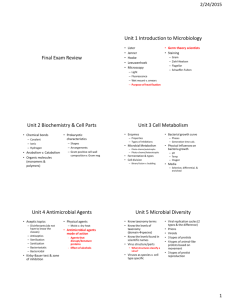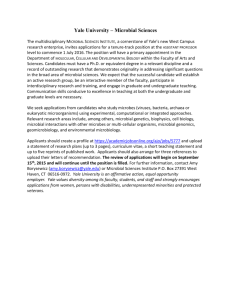Use your lecture notes as a guide for this chapter`s material
advertisement
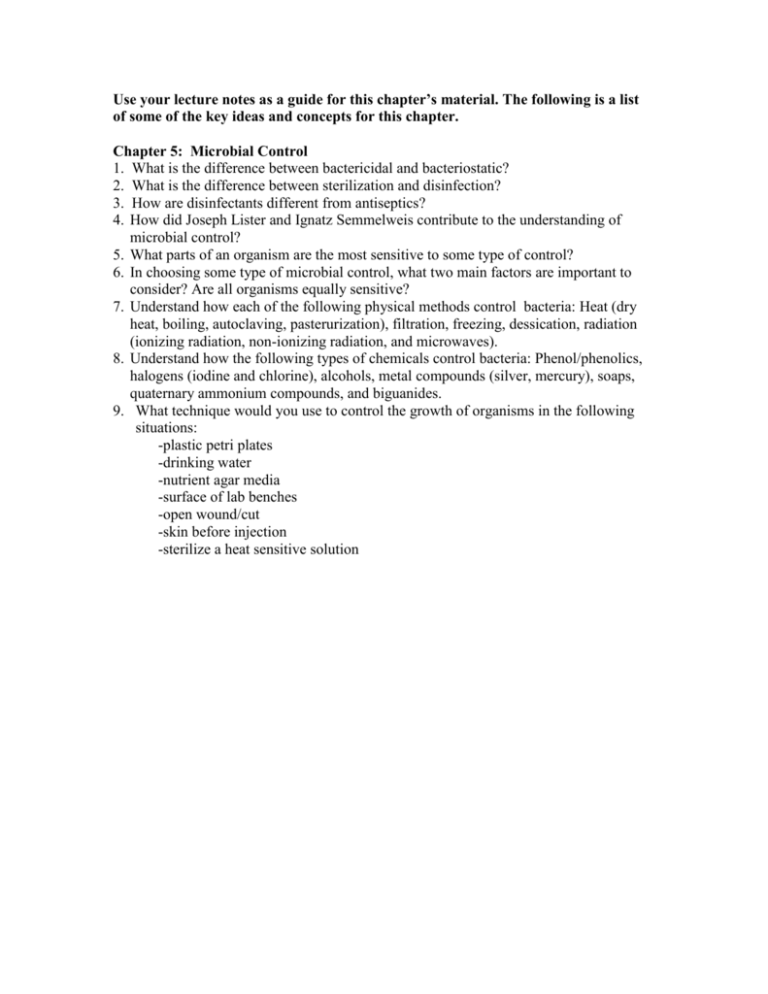
Use your lecture notes as a guide for this chapter’s material. The following is a list of some of the key ideas and concepts for this chapter. Chapter 5: Microbial Control 1. What is the difference between bactericidal and bacteriostatic? 2. What is the difference between sterilization and disinfection? 3. How are disinfectants different from antiseptics? 4. How did Joseph Lister and Ignatz Semmelweis contribute to the understanding of microbial control? 5. What parts of an organism are the most sensitive to some type of control? 6. In choosing some type of microbial control, what two main factors are important to consider? Are all organisms equally sensitive? 7. Understand how each of the following physical methods control bacteria: Heat (dry heat, boiling, autoclaving, pasterurization), filtration, freezing, dessication, radiation (ionizing radiation, non-ionizing radiation, and microwaves). 8. Understand how the following types of chemicals control bacteria: Phenol/phenolics, halogens (iodine and chlorine), alcohols, metal compounds (silver, mercury), soaps, quaternary ammonium compounds, and biguanides. 9. What technique would you use to control the growth of organisms in the following situations: -plastic petri plates -drinking water -nutrient agar media -surface of lab benches -open wound/cut -skin before injection -sterilize a heat sensitive solution
